Humane Animal Rescue
Responsive Web Design
What I did
- Research
- User Mapping
- Ideation
- Persona Creation
- Storyboard/ Speed dating
- Final Designs
Designing for the Future of Pets
Fall 2018 Interaction Design Studio
In collaboration with Jiasi Tan, Alyssa Deng, and Conlon Novak
Humane Animal Rescue has a rich history of helping animals in our community. They aim to bring greater efficiency in animal care processes, staff training, and cutting-edge practices to one cohesive organization.
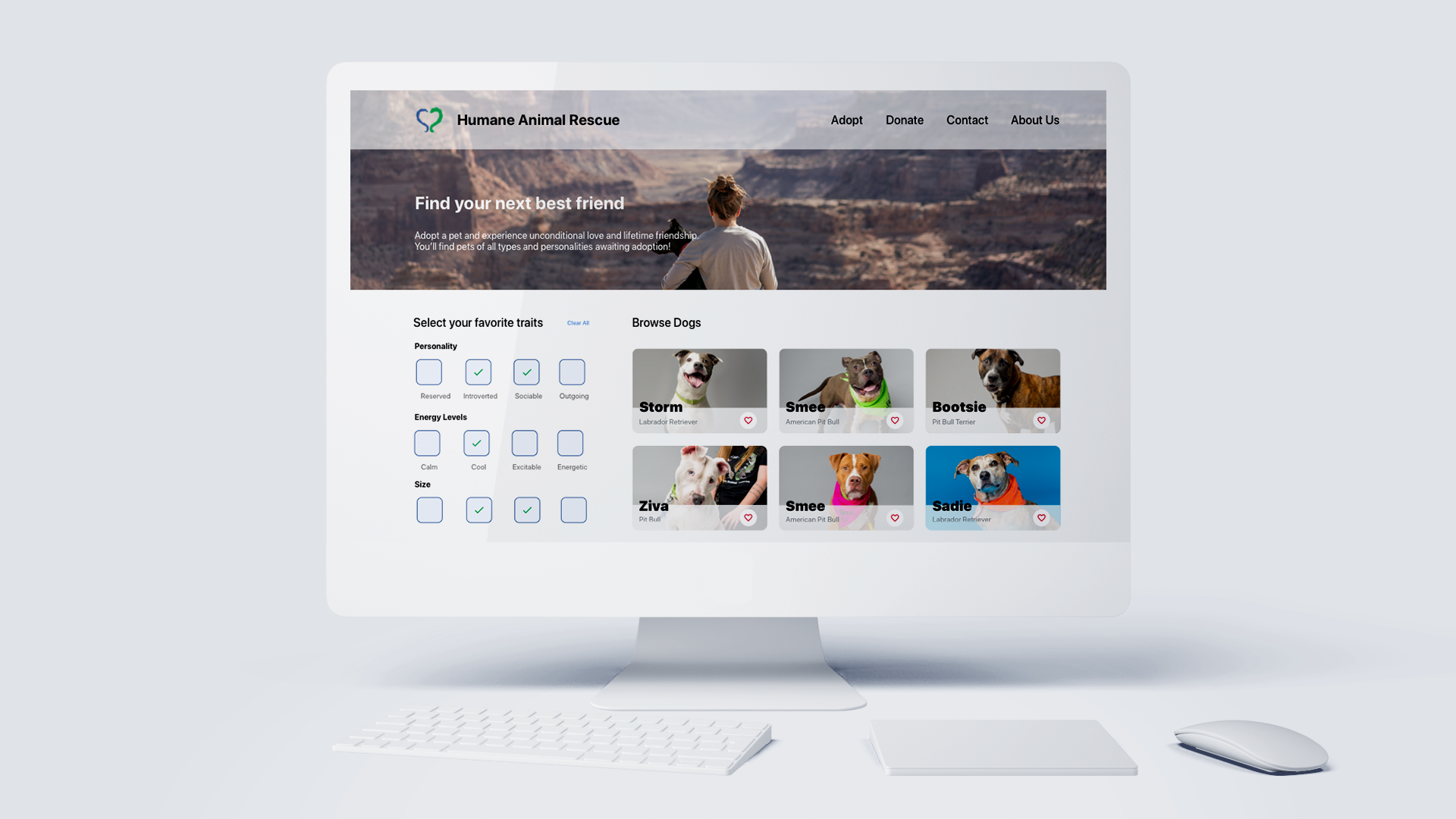
Product at a Glance
Humanized Pet Filtering
We designed a filtering system that tailors the results to the user’s favorite qualities about dogs. It also enables users to discover dog breeds that they might not have had in mind in the first place.
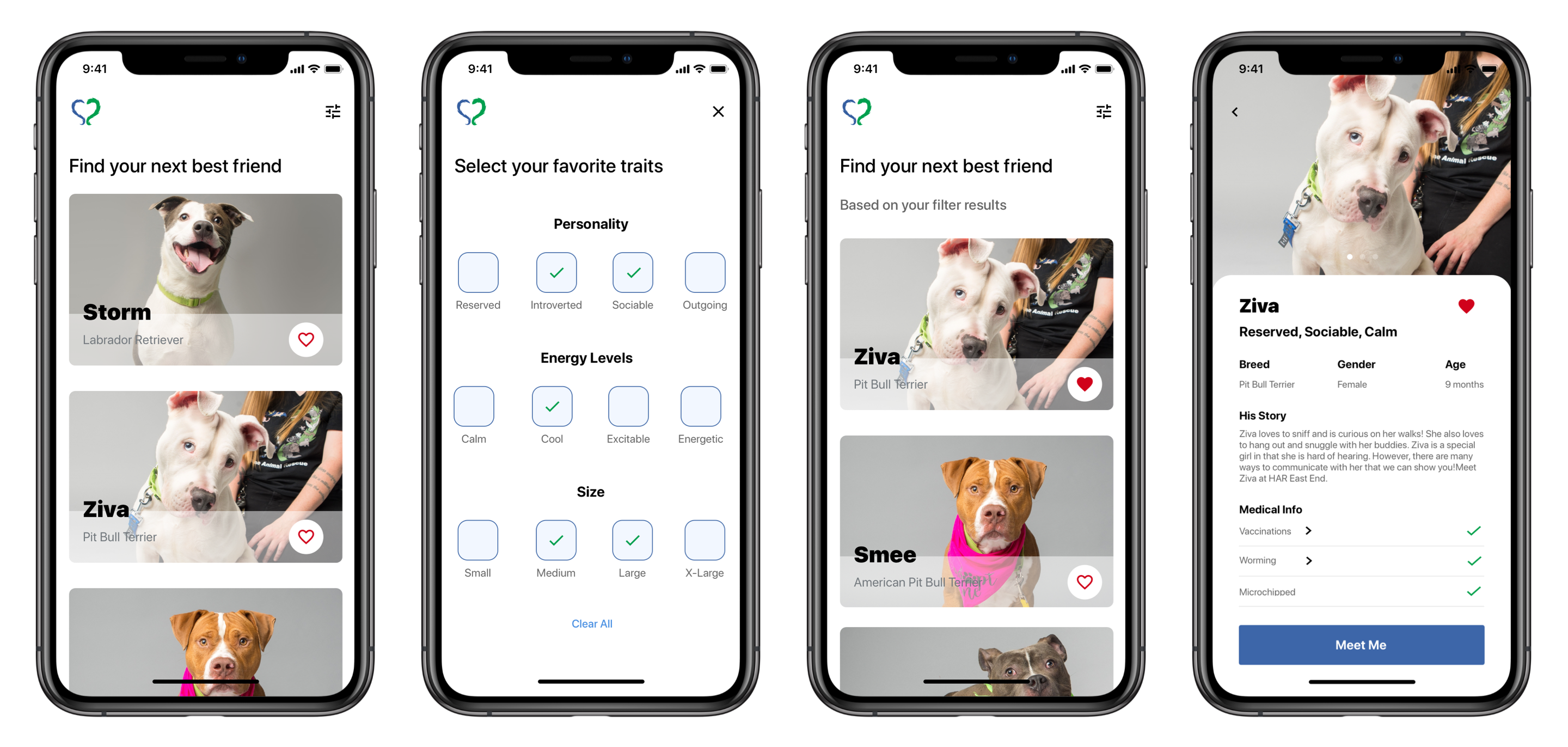
Our Design Process
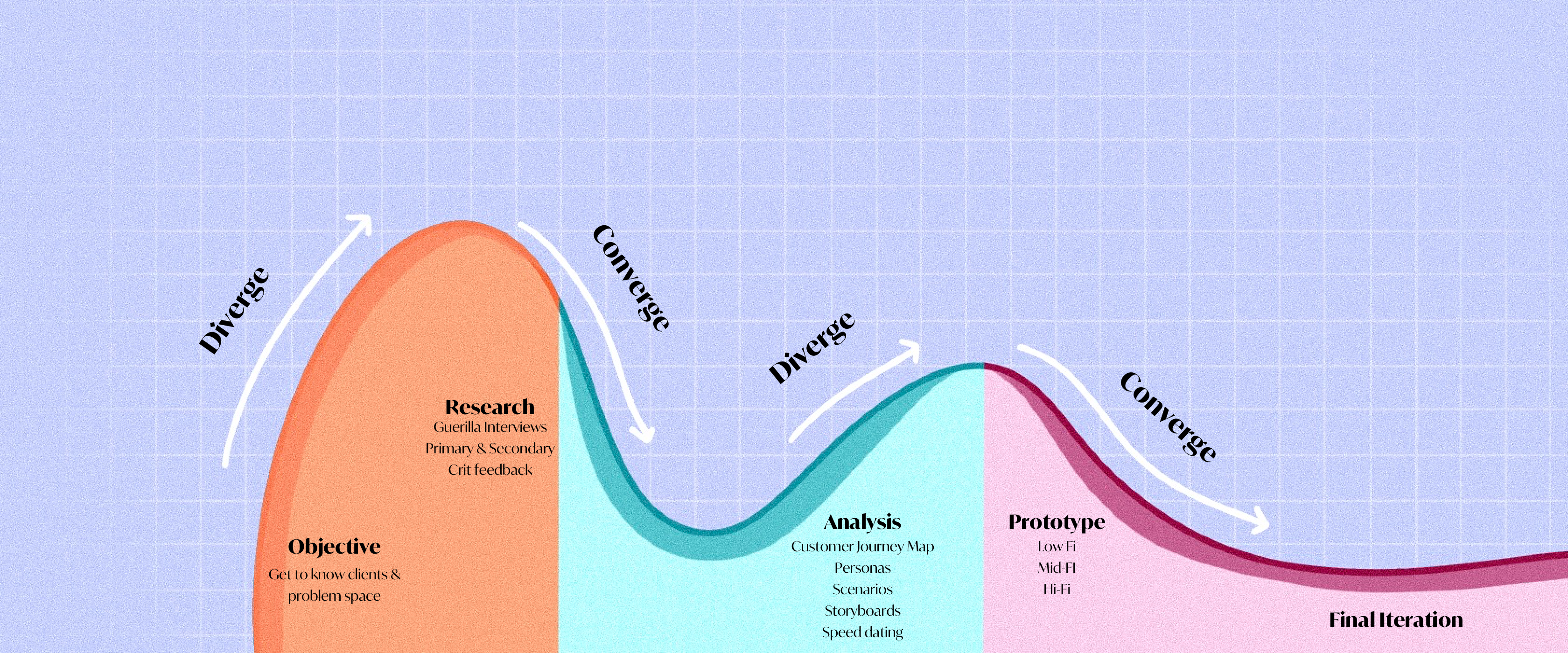
Research Phase
Discovering the Needs of Our Stakeholders
Guerilla Research
We went to the shelter and attended a pet expo to interview adopters, volunteers, employees, and the business owners of shelters. For each, we tailored specific questions to identify the pain points and opportunities. Our observations led us to a few core insights of our key stakeholders:
Customers
People do not have preferences when it came to the physical traits of the dog. They would rather try to find a “connection” with the dog instead.
Service Providers
They strive to get as many animals as they can to be adopted. However, some animals have stereotypes or stigmas- making them less popular and prevents the service provider from achieving this goal.
Business Owner
They are looking for ways to increase animal adoption rates.
Ensuring that the adoption process goes well is very crucial in order to increase the retention rates of the new family pet.
Adoption Barriers
We found that people adopt dogs mostly based on how well they connect. However, many senior dogs and black dogs are overlooked before getting to the meeting stage. This is the main service provider problem we wanted to focus on. We scoped down from the entire process that a dog goes through in the shelter, which included getting noticed on social media and potentially being given up again after adoption.
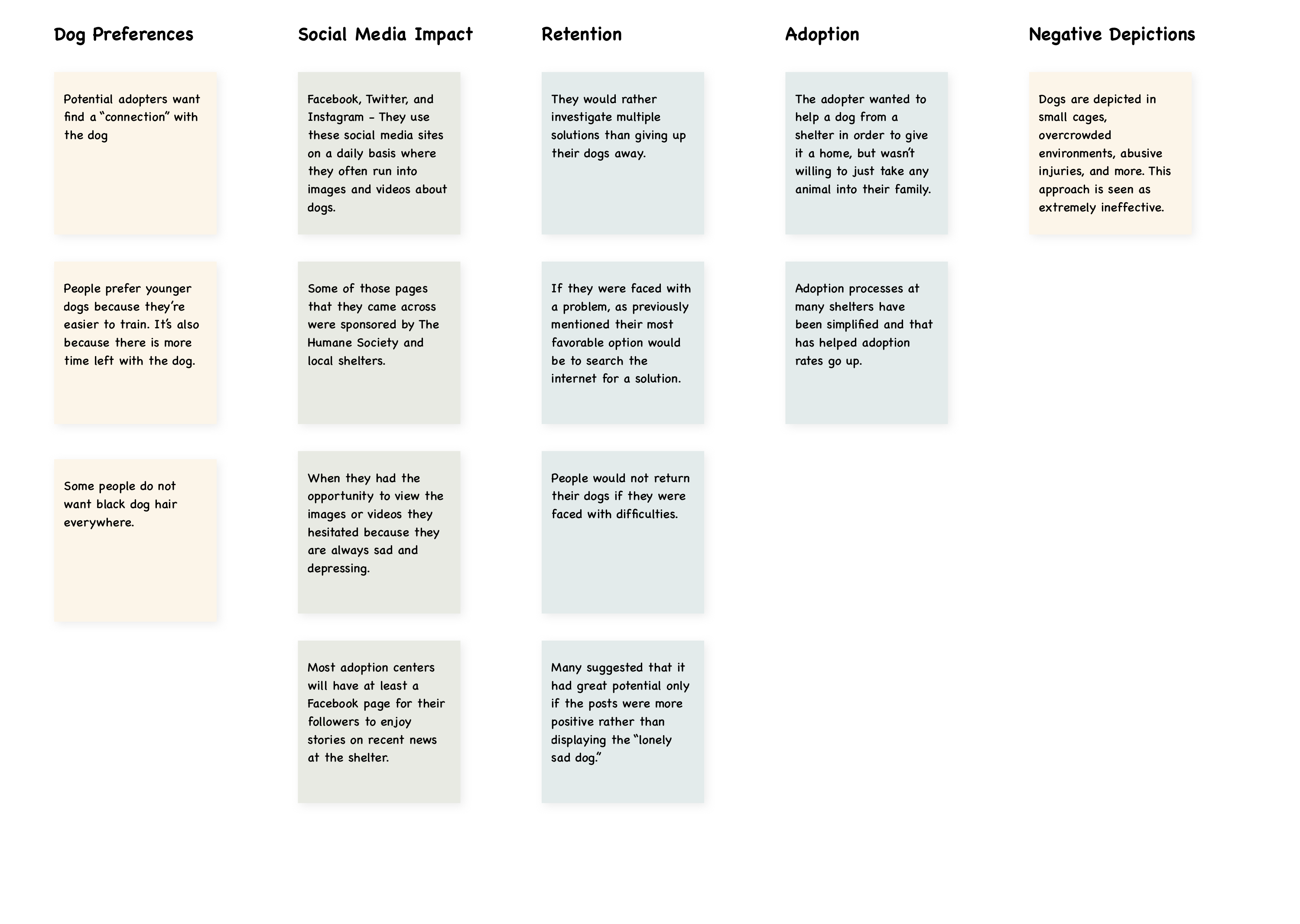
Analysis
Customer Journey Mapping
Keeping the stakeholder triangle in mind, we synthesized our research into insights, pain points, and opportunities.
Adopter's Journey Map
During our first critique, we were told that this was too broad and to focus of one aspect so we decided to focus of the period of time before adopting a dog.
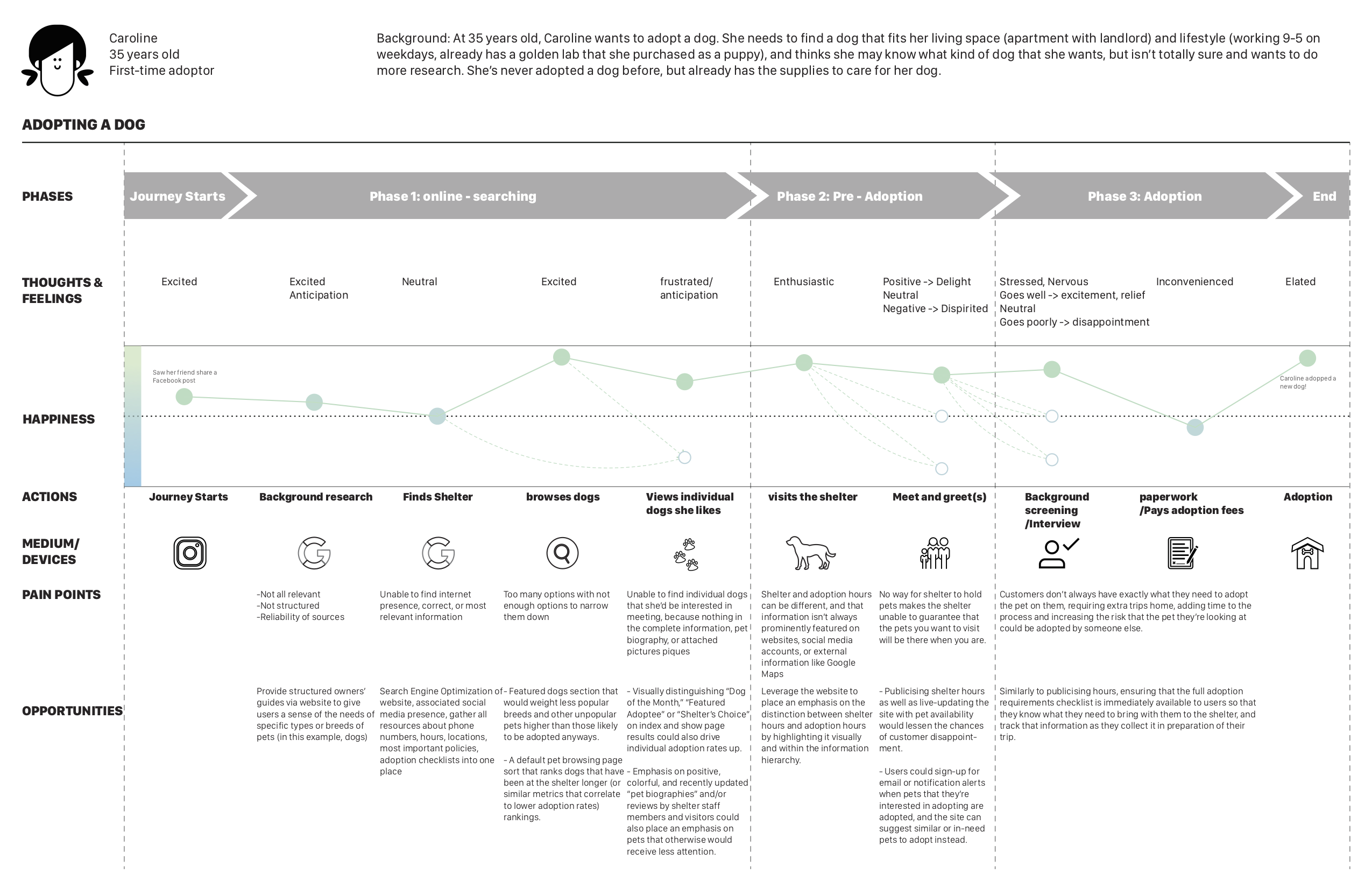
Service Providers's Journey Map
By analyzing the time before a dog was adopted, we learned that the only interaction between customer and service provider was the pre-adoption and adoption phases.
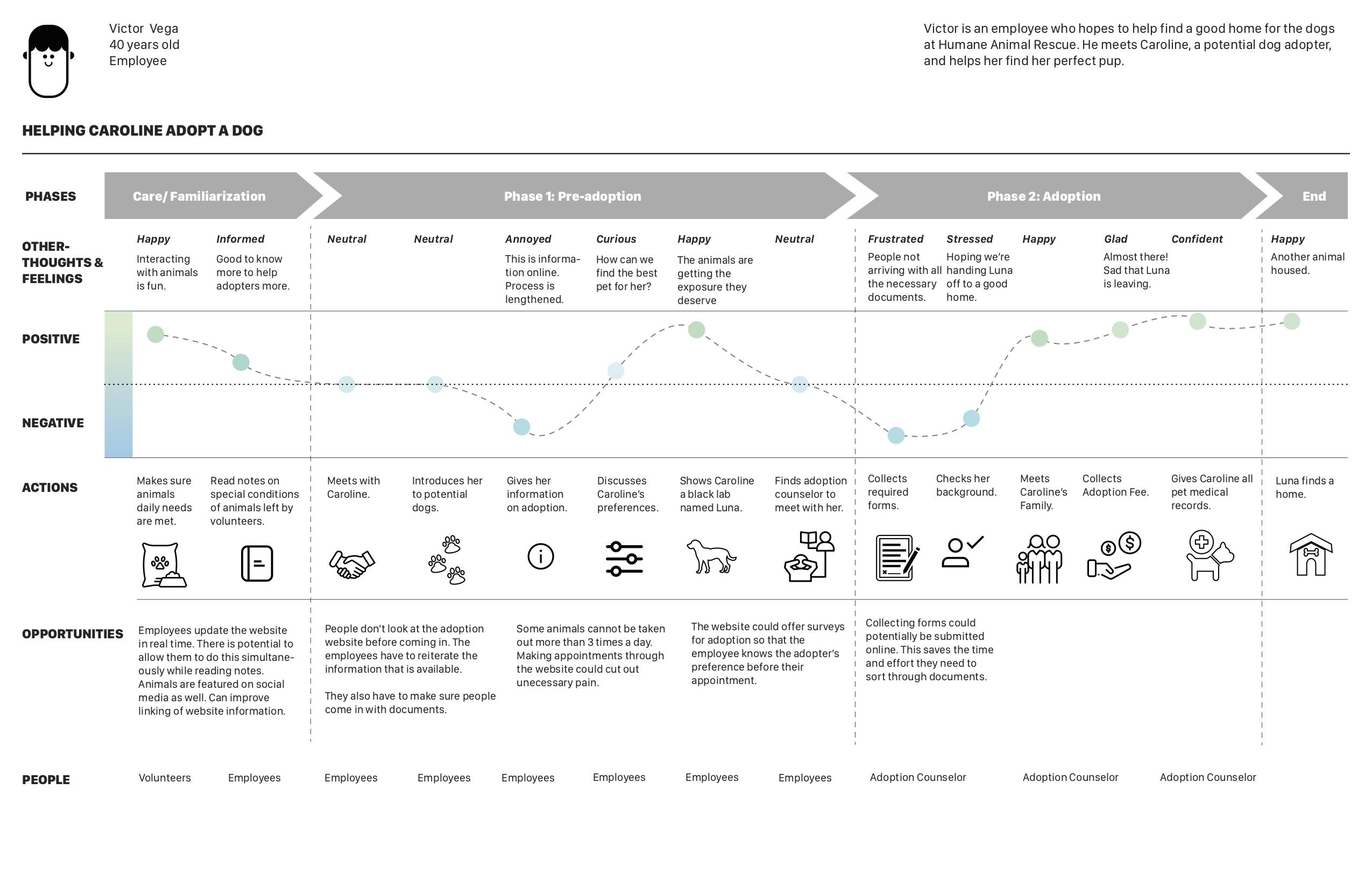
Creating Useful Personas
Creating the right personas influenced our direction for design. We knew it was critical to base our personas on our research with real people and not based on assumptions.

Jhené
Single Mother, Empty Nester, Dog Owner, and First Time Adopter
Pain point: Needed to leave the animal shelter website to find information that would help her narrow down to the kinds of dogs that would best fit her lifestyle.

Victor
Employee at Humane Animal Rescue since 2015, Pet Lover
Pain point: People looking for more attractive dogs, whether they know it or not, and treat the adoption process more like a shopping experience than rescuing a pet in need. This means that it takes extra effort to convince these people that pets they otherwise wouldn’t consider could still be right for them.
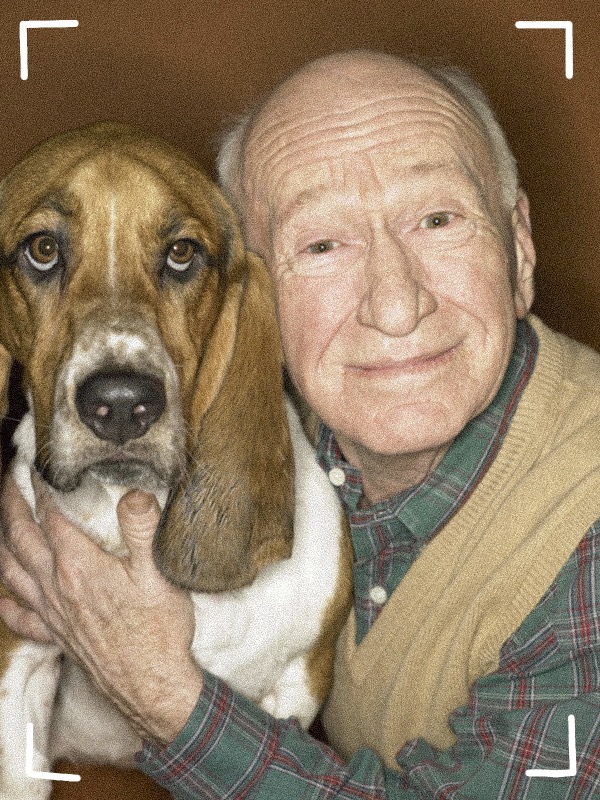
Keegan
CEO of Humane Animal Rescue, Retired Veterinarian
Pain point: Difficult to maintain funding at the level required for shelter maintenance, consistent animal care, as well as savings for planned future expansions.
Speed dating results
People Care About Personality
After analyzing the feedback we got from speed dating we were able to gain several insights:
- People have preferences on the characteristics of dogs
- People are not as interested in exposure to detailed information on dogs initially
- They want a smooth adoption process
- They want to learn more about the qualities of the dogs
Goals
Design Decisions

Break stereotypes on “less adoptable” dogs.

Get dogs adopted faster while lowering return rates.
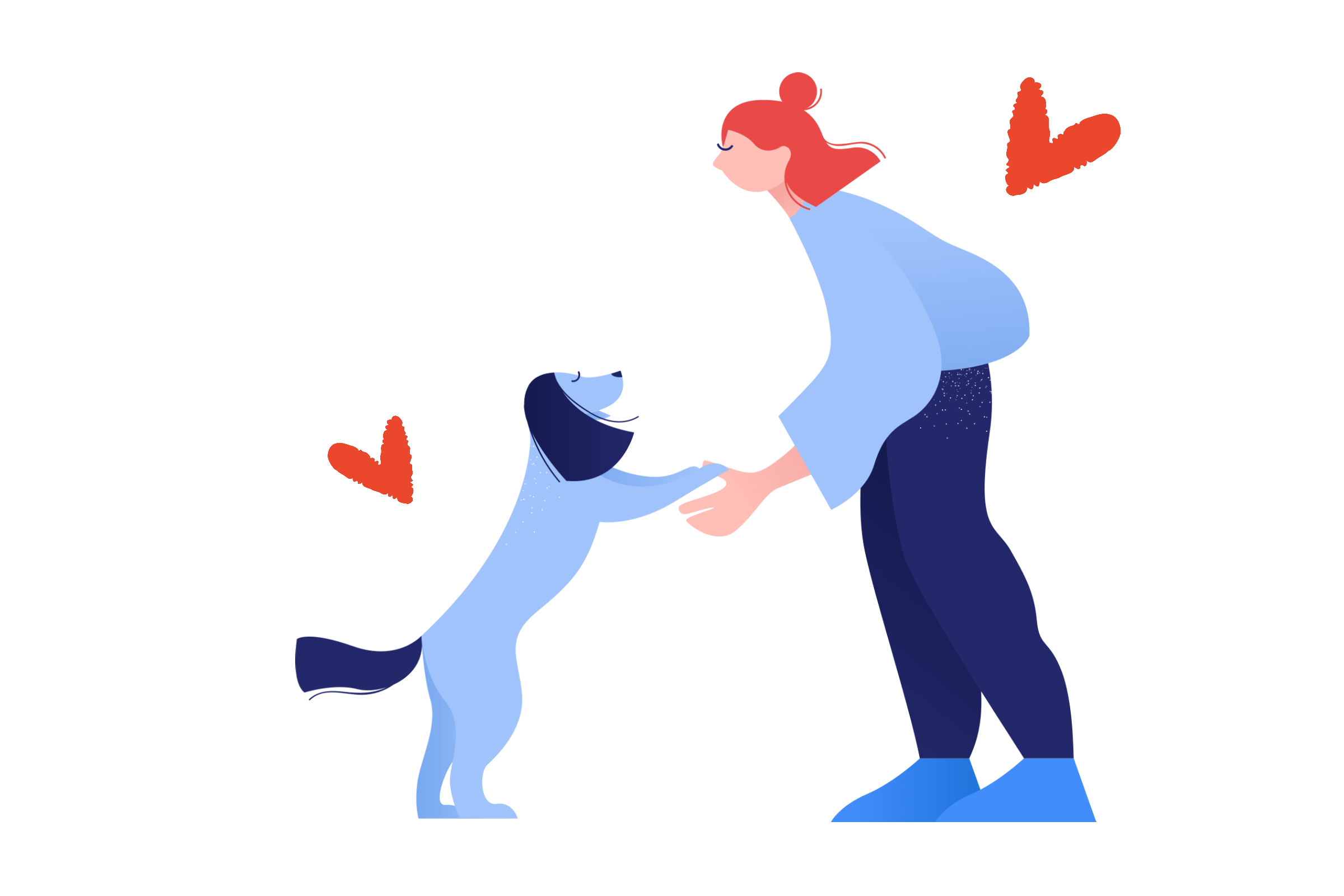
Find the right match for adopters.
Final Design
Hi-Fidelity Wireframing and Prototyping
Based on all discussions we had and feedback we got, our objective was scoped down to helping first time adopters adopt what are generally less adopted, such as senior or black dogs. We did not only scope our topic, we also majorly scoped down our focus on the website. We went from wanting to include numerous features in our website to just focusing on our filter function.
The problem space we focused on in the end was creating a filter function that helps first time adopters find their ideal dog while promoting the dogs that are less likely to be adopted in shelters.
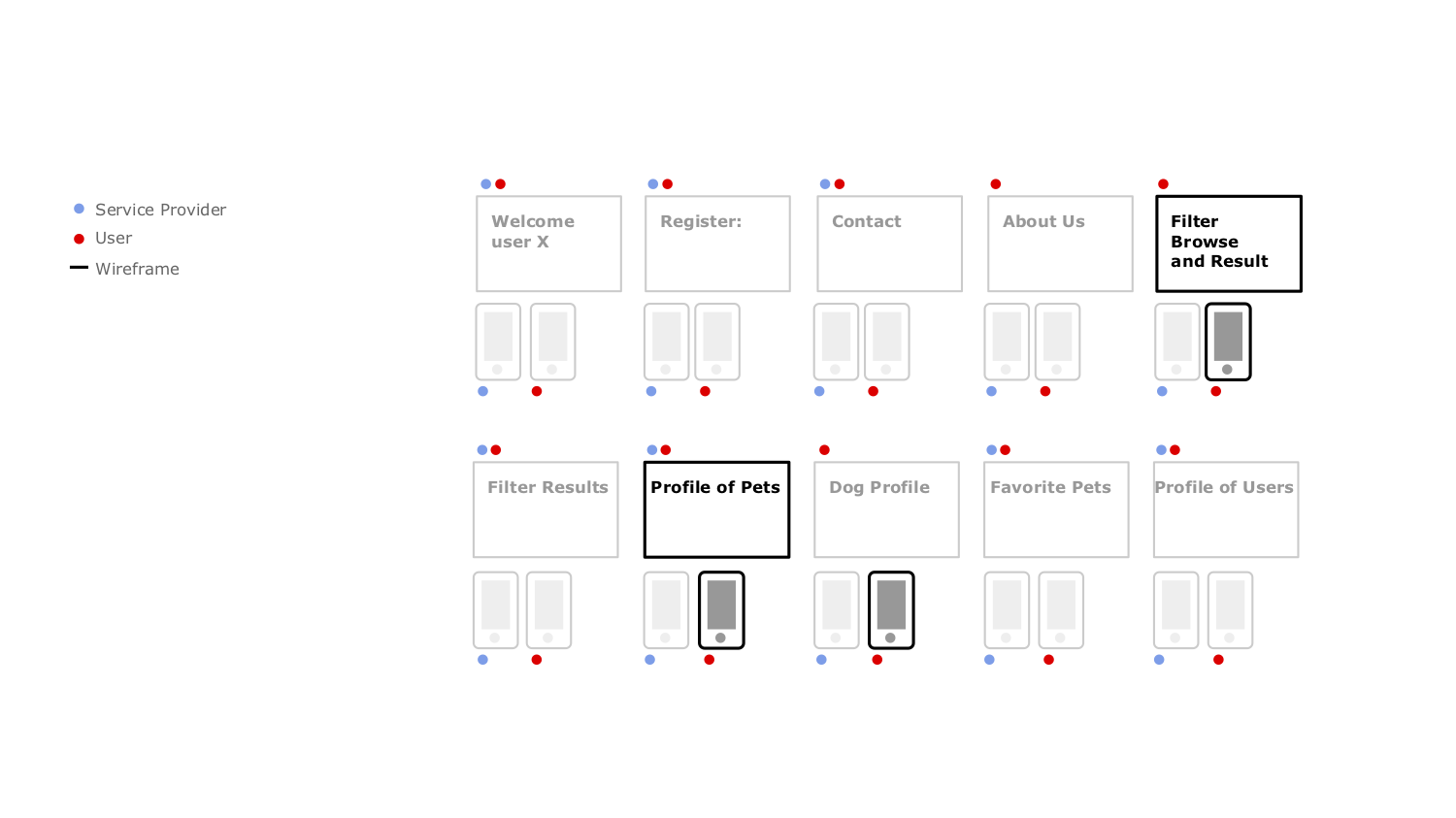
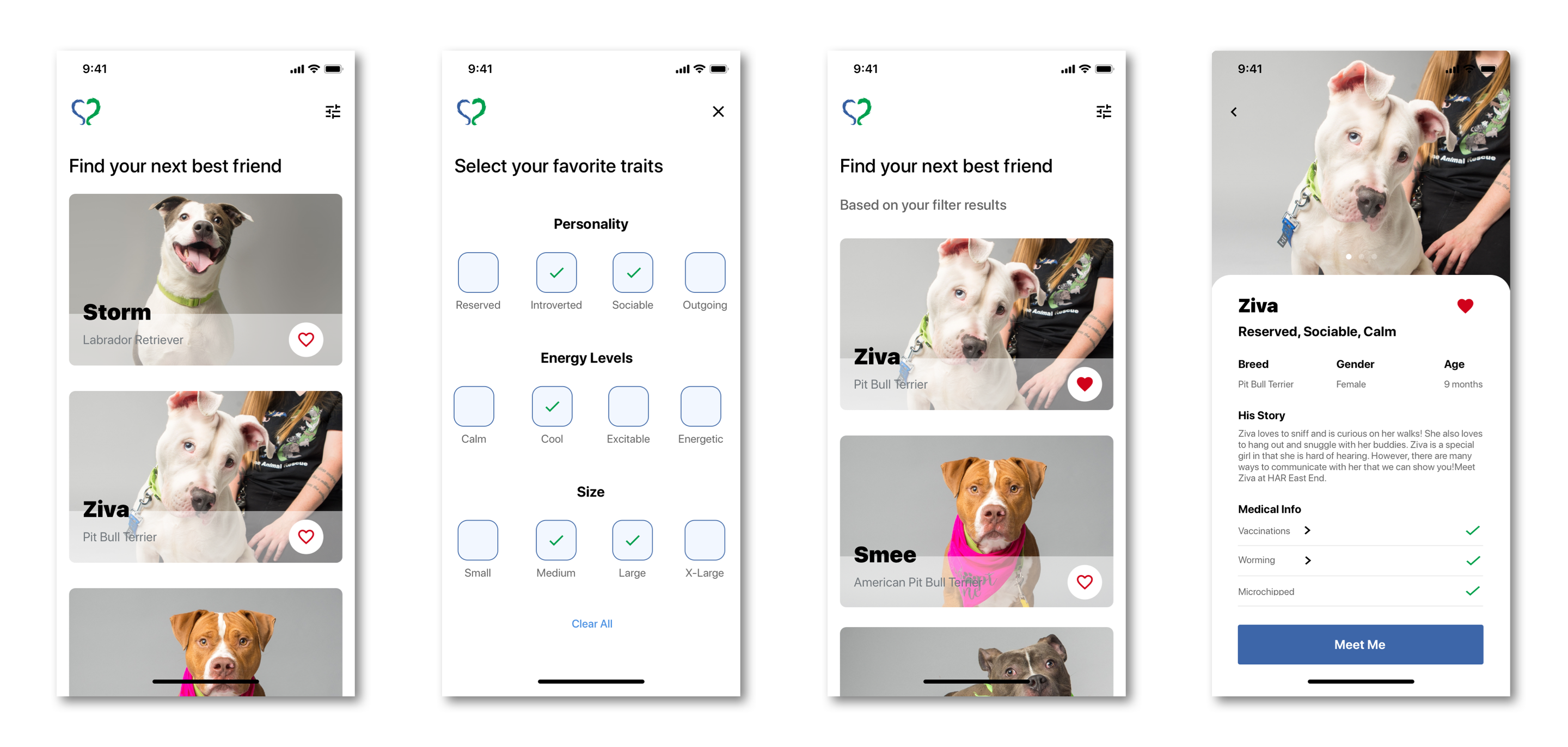

Click Through
Our Pitch Outcomes
Overall, our design was very well appreciated by our audience. Steffi, who was from Humane Animal Rescue, commented that we had a very good focus with the goal to “decrease length of stay, as a shelter person, reducing length of stay is the holy grail. I got a chuckle out of the scenario they came up with, the empty-nester from Shadyside, that was a nice touch”.
Product Video
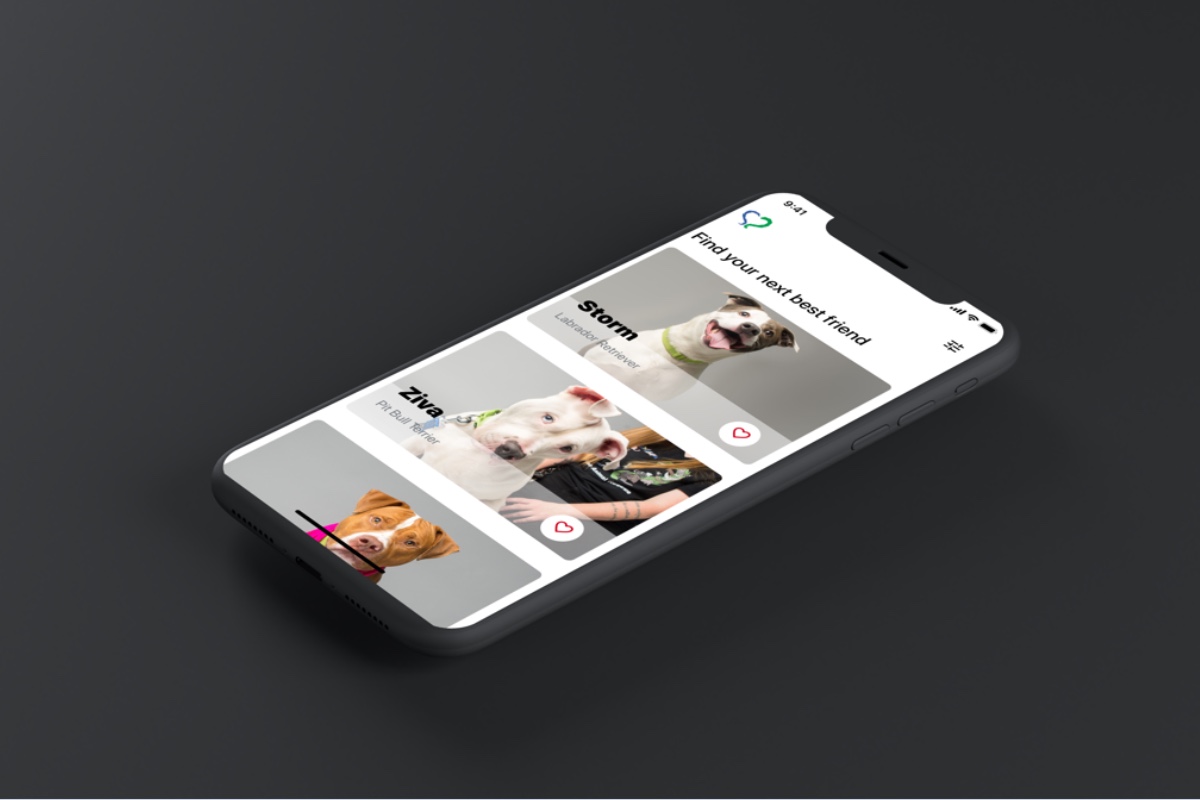
Next Steps
My Final Thoughts
It was easy to rush into designing what we wanted to achieve, which was a system that could help less adoptable dogs get adopted. However, I quickly learned that it is not that easy and that there are many design considerations that I did not even think of.
- A pivotal moment in this project was when I learned that too much information gathering would hinder the user from continuing with the filter, creating a barrier to entry.
- Learning to put the more humanized filter first, before all the general information, made me realize how important progressive disclosure is in order to develop trust in the design.
- It was especially hard to think of design in the light of three different stakeholders. It really pushed me to think beyond just one user.
- This was my favorite project this semester, not just because our topic was on pet adoption, but because there was so much more to think and ponder about.

